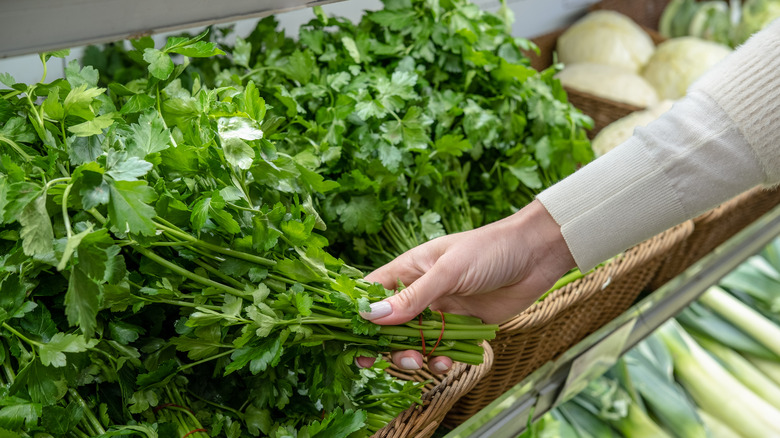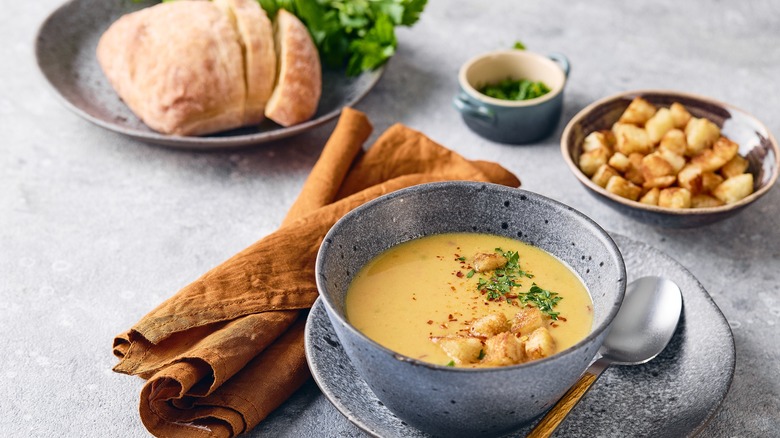The Ratio To Know When Swapping Fresh Parsley For The Dried Variety
The beautiful, green display of herbs at the grocery store is definitely hard to resist. When you walk past it, you might feel an instinctual urge to reach out and grab a bundle of fresh parsley, dewy leaves included, and build an entire recipe around it. But when the selection of parsley leaves at your store looks a bit lackluster, you can always turn to dried parsley to impart that grassy, mildly bitter flavor to your food — with some caveats.
You can't substitute fresh parsley for dried parsley using a 1-to-1 ratio because the potency is different. In general, when you substitute dried herbs for fresh ones, follow the ratio of one teaspoon of dried herbs for each tablespoon of fresh. When working with parsley specifically, you can get away with using ⅓ of the amount of dried herbs as fresh.
Moreover, dried and fresh parsley have different uses in the kitchen. You'll need to use dried herbs earlier on in the cooking process so that the flavors can meld with the other ingredients you're cooking with. Fresh herbs have a much brighter color and are great for a garnish, so you'll want to hold off on adding them until the end of the cooking process or right before you're about to serve them.
When to use dried versus fresh parsley
Dried herbs can be a cheaper alternative to fresh ones, but you'll have to be judicious with how you use them. The flavor is much more concentrated, and you'll inevitably lose some of that grassy profile because they're fully dehydrated. One recipe where dried parsley shines is in a potato leek soup. You'll want to add it to the mixture with your garlic and thyme so that the flavors can meld together. You can also add dried parsley to a homey chicken noodle soup. Our recipe calls for fresh parsley, too, but this herb should be reserved for the last few minutes of cooking or as a garnish.
Fresh parsley, meanwhile, can really stand out when it's paired with other fresh, summery ingredients. Add it to a summery BLT pasta salad so that the bitter taste of the greens can meld with the cold pasta, dressings, and vegetables. You'll get a bright, unmistakable pop of color that will make your meal all the more tantalizing.

